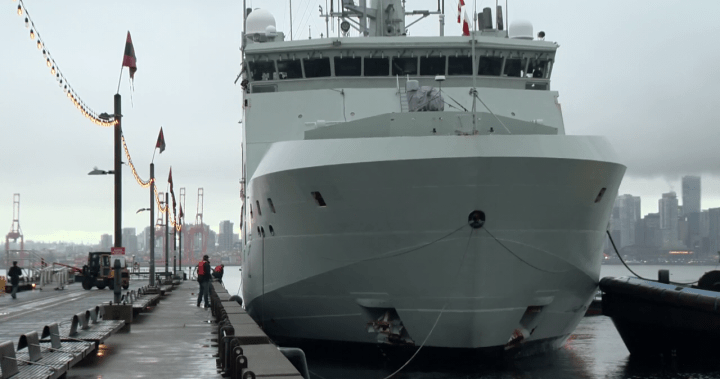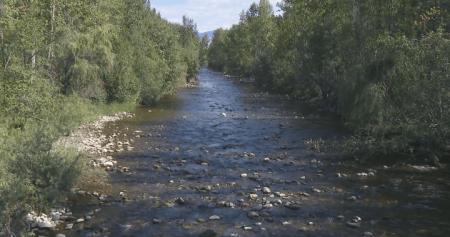The HMCS Max Bernays, the first of Canada’s new class of Arctic and Offshore Patrol Vessels (AOPV) to join the country’s Pacific fleet, was recently showcased in Vancouver. The 103-metre, ice-capable ship is the fourth of six planned Harry DeWolf-class AOPVs to be added to the Royal Canadian Navy under the National Shipbuilding Strategy. Commanding officer Cmdr. Nadia Shields described the vessel as a “pickup truck” due to its various capabilities, including the ability to handle multiple payloads such as shipping containers, underwater survey equipment, and landing craft. It also features a vehicle bay that can accommodate pickup trucks, all-terrain vehicles, and snowmobiles, making it a versatile asset for the Navy.
Despite having a smaller crew than similar-sized ships in the Navy, the HMCS Max Bernays is equipped with cutting-edge autonomous technology and redundancies that allow it to perform various tasks, including humanitarian and interdiction missions. What sets it apart is its capability to operate in first-year sea ice in the Arctic, making it crucial for Canada to maintain a presence in the region as climate change opens up new opportunities and challenges in the Arctic. Shields emphasized the importance of Canada asserting its influence over Arctic waters amidst the changing geopolitical landscape, with both friendly and adversarial countries developing capabilities to navigate the region year-round.
The construction of the Max Bernays took place in Halifax before being deployed to its new homeport in Esquimalt. However, the vessel encountered some challenges during its journey, including flooding and mechanical issues while participating in an international exercise over the summer. As a result, it had to make an unplanned stop at Pearl Harbor for repairs. Despite these setbacks, the HMCS Max Bernays represents a significant asset for the Royal Canadian Navy’s Pacific fleet and plays a vital role in upholding Canada’s interests in the Arctic region.
As countries around the world compete for control and access to the Arctic’s resources and shipping routes, Canada’s commitment to maintaining a presence in the region is essential. The capabilities of the Max Bernays, combined with its ice-capable design, provide the Royal Canadian Navy with a valuable asset for conducting operations in the challenging Arctic environment. With the reduction of polar ice due to climate change, the Arctic is becoming increasingly accessible, making it crucial for Canada to assert its sovereignty and monitor activity in the region through vessels like the HMCS Max Bernays.
The vessel is named after Max Bernays, an acting chief petty officer aboard HMCS Assiniboine, who played a crucial role in sinking a submarine during the Battle of the Atlantic in 1942. This naming choice reflects the Navy’s tradition of honoring heroes and significant historical events in its vessels. As the first of its class to join the Canadian Navy’s Pacific fleet, the HMCS Max Bernays represents a new era of capabilities and technology for the Royal Canadian Navy, demonstrating its commitment to protecting Canada’s interests in the Arctic and offshore regions. Despite encountering challenges during its deployment, the vessel remains a key asset for the Navy’s operations and missions in the challenging Arctic environment.













